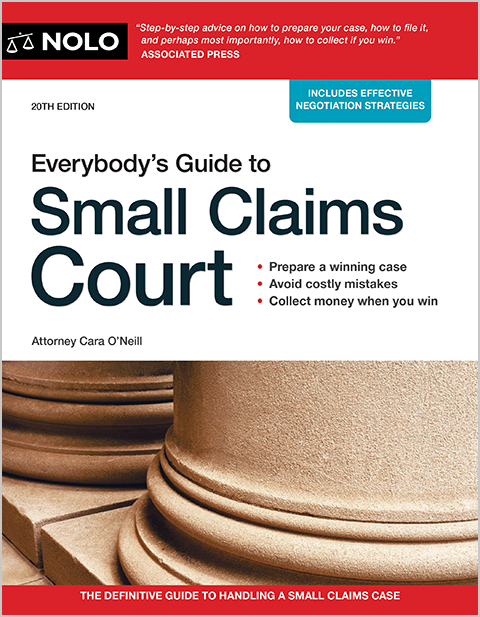Bicyclists must follow most of the same traffic laws as other vehicle operators, so bicyclists can be deemed at fault for causing an accident.
Bicyclists and motorists tend to be pretty wary of one another on the streets and highways, especially in larger cities. Drivers claim that some bicyclists ignore traffic laws, while cyclists often feel that motorists don't properly share the road.
Regardless of preconceptions (let alone misconceptions), drivers and bicyclists can both be legally liable for causing or contributing to a traffic accident. And in some situations (as when a bike hits a pedestrian), the cyclist can bear most of the fault.
Bicyclists Must Follow the "Rules of the Road"
A bicyclist is in a unique position on the road, operating a bare-bones vehicle under their own power, often around much larger and faster vehicles. But bicyclists (and e-bike riders) must follow most of the same rules of the road as other vehicle operators. This means bicyclists must:
- avoid making unsafe lane changes
- yield to pedestrians
- stay off the sidewalks, and
- obey all traffic signs and signals (usually).
If a bicyclist violates a traffic law, and that traffic violation causes an accident, the bicyclist can certainly be held liable for injuries and other losses incurred by anyone else who was involved in the crash. Whether that cyclist has any available insurance to cover those losses is another issue (more on this later).
It's also worth noting that, while bicyclists must obey traffic laws in most situations, there are also some traffic laws that apply only to bicyclists. Failure to follow these special traffic laws may go a long way toward proving that a bicyclist wasn't acting with reasonable care. Some examples of these laws are:
- the requirement that bicyclists ride as near to the right side of the road as practicable in most situations
- prohibitions on the carrying of packages and other passengers on a bicycle, and
- mandatory use of proper visibility aids when riding at night.
Learn more about what to do after a bicycle accident.
Negligence and Shared Fault In Bike-Car Accidents
As with most other kinds of accidents, fault for a bicycle-versus-car accident is typically based on the legal concept of negligence. Simply put, anyone operating a vehicle on the road must act with reasonable care toward others. The failure to act with reasonable care (violating a traffic law, for example) amounts to negligence if someone is injured as a result.
So, if there's a bicycle-car accident at an intersection, a traffic violation by anyone involved in the crash (running a red light, rolling through a stop sign) will likely be the critical factor in a fault determination (with the violating driver or cyclist being deemed negligent). Learn more about negligence and fault for an accident.
Besides using the concept of negligence as the yardstick for assessing fault for a bicycle-versus-car accident, all states follow some version of shared fault rules, which can affect how personal injury damages are assessed.
Contributory Negligence In Bike-Car Accident Cases
Under the shared fault rule of contributory negligence, if someone is responsible for causing an accident in any way, they can't receive compensation for their injury-related losses in a personal injury lawsuit. This means that a bicyclist (or anyone else) who's only 1% responsible for causing an accident can't recover anything, even from someone who was 99% at fault. This is a very harsh rule, and it's only in place in a few states:
- Alabama
- Maryland
- North Carolina
- Virginia, and
- Washington D.C.
Comparative Negligence In Bike-Car Accident Cases
The vast majority of states follow "comparative negligence," although there are variations in how the rule is applied.
Under pure comparative negligence, each person involved in an accident can recover for losses caused by others, regardless of the amount of each party's fault. Let's look at an example.
Lionel was riding his bicycle through a four-way stop intersection when a car hit him. Lionel and the driver both ran their respective stop signs, but the driver was speeding, and was legally drunk at the time of the accident. Lionel was riding slowly through the intersection, and was not impaired. At trial, a jury finds that Lionel was 20% at fault for causing the accident while the other driver was 80% at fault. If Lionel's injuries amount to $200,000, he can recover $160,000 from the driver, or 80% of his total damages.
With modified comparative negligence, you can't recover for damages if your share of fault for the accident meets or exceeds 50 percent (states vary on the exact percentage).
Looking back at the above illustration, because Lionel's level of fault was less than 50%, his lawsuit will still proceed through the courts in a modified comparative negligence state, but he'd have his damages award reduced by 20%.
Learn more about:
- contributory and comparative negligence in car accident cases, and
- proving fault for a vehicle accident.
Preventing Bike-Car Accidents
Even in situations where the rules of the road are on their side, bicyclists shouldn't forget the laws of physics. Cars and trucks are much larger than bicycles, and offer a tremendous level of physical protection in comparison with bikes.
And bicyclists also need to take reasonable steps to avoid accidents. This means, among other things:
- No drinking and riding. According to the National Highway Traffic Safety Administration, around 20 percent of bicyclists killed in accidents have a blood alcohol concentration of 0.08 or higher).
- Doing everything possible to be visible to other motorists (such as wearing reflectors, installing blinking lights, and using adequate illumination to see the road effectively).
Can a Bicyclist Be At Fault For Not Wearing a Helmet?
Failure to wear a helmet won't make a bicyclist liable for an accident. Put another way, liability in an injury case is determined by who caused the underlying accident—through negligent operation of their car or bicycle, for example.
But when a bicycle-versus-car accident occurs in a city or state where the law requires the bicyclist to wear a helmet, and the bicyclist wasn't wearing one, they're probably going to have a more difficult time getting compensation from the at-fault driver. Learn more about bicycle helmet laws.
Does Insurance Cover Bicycle Accidents?
The answer here depends on:
- the details of the accident, and
- the type of coverage that might be available.
For example, if the bicyclist was at fault for the accident, their homeowner's insurance (if they have it) might actually cover injuries and property damage suffered by others. But the cyclist's car insurance (even if they have it) won't apply to cover harm they cause to others while riding a bicycle.
If a bicyclist's negligence causes an accident, and the cyclist has no available insurance coverage that might apply to the crash, it can be tricky for an injured person to recover compensation, unless the bicyclist has sufficient assets. That's true regardless of the clarity of the bicyclist's fault, or the severity of the resulting injuries. Learn more about the role of insurance in an accident case.
Getting Help After a Bicycle Accident
If you're a bicyclist who was injured in an accident, and the other person involved (or their insurance company) is claiming you were at fault, it might make sense to discuss your situation with an experienced lawyer. And if you've been injured by a bicyclist's recklessness or negligence (as a pedestrian, for example), you might be in for some challenges when it comes to getting compensation for your losses. But it might be worth it to get an attorney's take on your options.
In either situation, learn more about:



